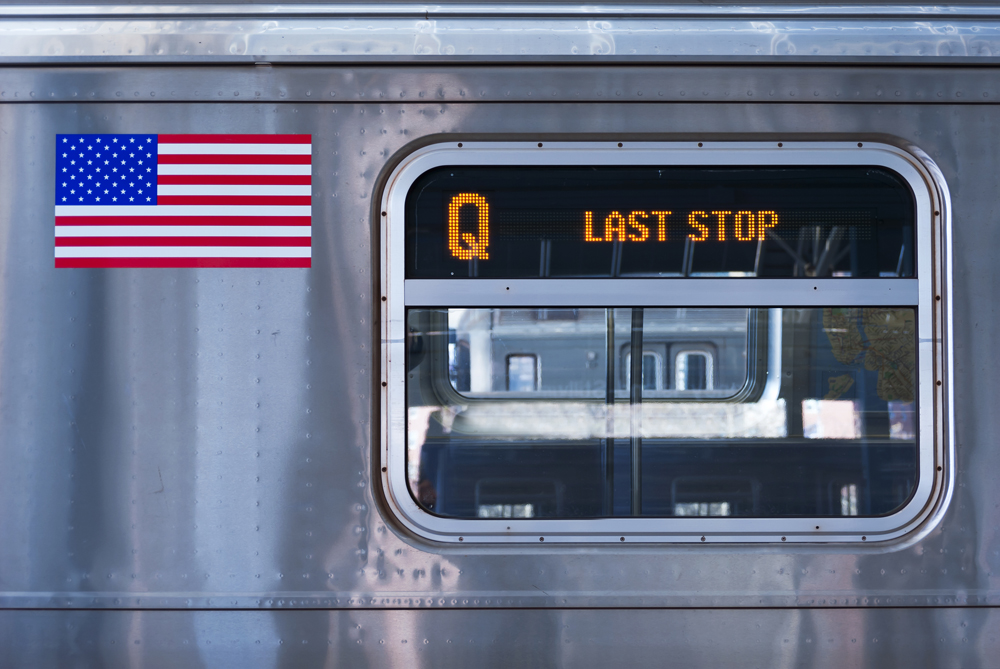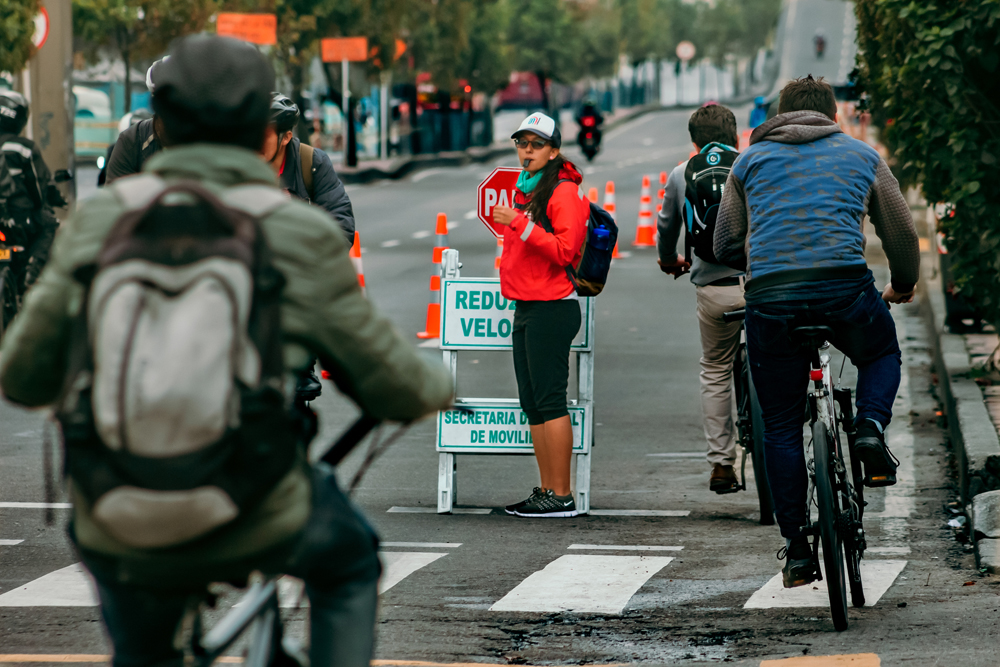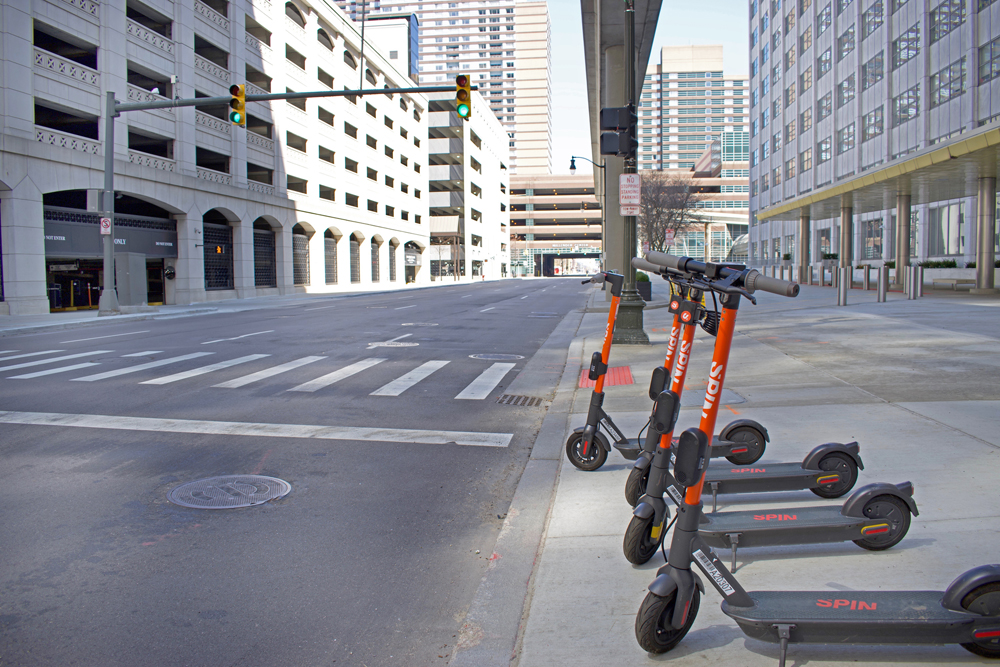
Strange days indeed. When a company with the profile of ride-share giant Uber releases a global advertising campaign whose message is ‘Thank you for not riding with us right now’, you know something is awry.
Uber has switched tack away from attracting the general public to use its services. Instead, its ‘Move What Matters’ initiative has seen it commit to providing free rides and grocery deliveries to key workers, particularly in healthcare, and to those deemed in need. Other mobility firms have engaged in separate, similar programmes of their own.
As well as being admirably altruistic, catching the mood of the times, this makes good business sense too, on the basis that doing something is usually better than doing nothing.
But the fact is that, as people are confined to their homes in large numbers all over the world, with no clear end in sight for many, transportation has taken a massive hit. Even as some US states tentatively open up for business, and other countries – notably South Korea – start to return to something like normal, problems in many places are likely to remain for some time to come.

Coronavirus has led to massive drops in passengers for public transit, and a drastic falling-off in riders wanting to use other shared transport services, such as dockless bikes and e-scooters. Mobility as a Service relies on these services – so what does that tell us about the future of MaaS, a phenomenon that is, after all, really just getting into its stride?
There are chinks of light through the darkness. Speaking on a CoMotion webinar, Olaf Sakkers, general partner at Maniv Mobility, insisted: “Public transit, especially in cities like New York, is a necessity and will revert to normal after the danger subsides.”
That certainly feels right – although how long it will take to get back to ‘normal’ remains anyone’s guess.
Essential service
And as Sakkers points out: “In the short-term, once you have lockdowns, that’s bad for micromobility.” Bird and Lime, for instance, have both laid off people while Spin saw “huge dips in demand”. In the medium term, in the ‘new normal’ that emerges, people will be more reticent to travel on public transit, Sakkers thinks. And this is where micromobility could come back into the picture, as it “offers a way in which to have more safe transit”.
Sakkers even makes the argument that micromobility is being seen as an essential service, citing those free rides for doctors and nurses. This is a turnaround, he says: “This thing that was seen, in some cases, like ‘sidewalk trash’ originally when it came and created a lot of controversy, is a key part of the mobility landscape and allows essential functions to happen in cities because transportation and mobility is so vital. I definitely see a pathway to future demand actually increasing in the medium term.” But he concedes the near-term is ‘tough’, however.
John Rossant, chairman of NewCities, is impressed with the way mobility companies have been able to pivot their strategies quite quickly – for example, such as ride-share concerns providing rides for first responders, or Uber Eats moving to grocery distribution, which Rossant suggests “will presumably be a massive growth market”. Logistics is certainly a “thriving area right now”, agrees Julie Lein, managing partner at the Urban Innovation Fund.
But there are signs that, despite the current ‘micromobility winter’, money will still be available to entrepreneurs who have good ideas around city transit – and this in turn suggests that MaaS has a future. Lein is “bullish and optimistic on the future of transportation in general” but points out that so many new transport innovations have come about because of urban mobility and sharing – and these are “things that are frankly antithetical to this time of social distancing”. However, while acknowledging that ride-sharing or shared scooters are not seen as safe at the moment, she takes the long view and is keen “to invest in new companies now and into the future in this space”.
Brian Yee, partner at venture capitalist Acme, thinks some mobility companies have the chance to amplify the utility of their services, most notably around delivery logistics. Uber, for example, has a labour force which can move both people and packages. While that won’t make up for lost revenue it, along with cost-cutting measures, can mean survival. Firms taking this approach “could put forth ancillary business lines that they maybe had been deprioritising to the forefront”. Indeed, Yee thinks: “So long as companies can make it through they might be coming out in a much stronger position with multiple businesses they now can offer.”
Successful operations
Yet all disruption presents both challenges and chances for growth. For Sakkers: “Innovation has a certain power to adapt to new realities – start-ups are small and nimble businesses and the current moment gives an opportunity for us to find some kind of new normal, to adapt to the new reality, whilst still trying to mitigate the damage of the disease and from social distancing, still trying to maximise the benefits, allows us to move forward, allows us to restart the economy and I think that’s what we should all be trying to focus on.”
Lein sees ‘asset-light’ companies, such as those providing navigation services, software, mobile software development kits and GPS solutions as coming out on top as we emerge from the shadow of Covid-19.These are, of course, exactly the sorts of companies on which successful MaaS operations are going to rely.
Movmi’s partner network contains a number of such firms. The organisation has created a Covid-19 taskforce which is designed to advocate for the shared mobility industry. Sandra Phillips, Movmi shared mobility architect, advises companies to reduce their costs – but, crucially, adds: “Find ways to connect with your members during this time; you want to make sure they remember your service when this is all over.”

“Some companies will not survive Covid-19,” acknowledges taskforce member Gabriel Scheer, senior director, data policy & strategic relationships at Lime. “Those who do will have many more cities in which to work as people start moving again.” With that in mind, he suggests: “Use this time to fix code debt, improve hardware, build relationships and improve regulatory regimes.”
Volker Amman, CEO of Avimo Consulting, suggests that companies need to explain clearly to investors and customers “why your company is going to add even more value after the corona crisis”. Looking ahead to another challenge for transportation – which has been put on the backburner over the last few months - he adds: “The climate crisis will be the even bigger challenge, and you can help solving it.”
MaaS specialist SkedGo even goes so far as to say that Covid-19 can ‘kick-start the MaaS revolution’. “There is little doubt that the financial repercussions of this virus will deal a heavy blow to many businesses and MaaS will not be immune to this threat,” writes CEO John Nuutinen on the company’s website. “After all, in an emerging market segment such as MaaS, the thin margins that sustain most businesses will not last long without government support or subsidies. However, for those businesses that emerge, after this threat has subsided, the world of MaaS will have changed…and likely not entirely for the worse.”
SkedGo bases its optimism on the idea that short-term pain can be followed by a readjustment in attitudes to travel which could benefit MaaS. The argument is sound: “Ultimately, for MaaS to succeed in positively transforming the way people travel for the benefit of society, a major transformation of historic attitudes and behaviours was always required,” writes head of marketing Sandra Witzel. “Covid-19 has not changed this. While many gains have already been made – driven by organisations actively pursuing the goals of MaaS – progress has been relatively slow and incremental at a global level. Now, inadvertently, Covid-19 has generated a rapid change in the way people feel, think and act, which could pave the way for bigger changes to come.”
Two wheels good
One area in which this seems to be the case already is in what looks like a growth in cycling during the pandemic. Some caution is required here, in that we would expect cycling to become more popular in Europe and North America, in particular, as we move into spring and summer. The need for exercise and a desire to stay off public transport must also fuel this. But it is striking that city authorities - from Budapest to Vancouver - are doing what they can to encourage it.
A prime example is Bogotá in Colombia (now moving into winter, of course), which quickly opened 76km of extra bike lanes in the city as coronavirus struck, adding to the 550km of existing, permanent network for cyclists.
Speaking on a Populus webinar about street planning, Nicolás Estupiñán, the city’s secretary of transportation, explained that almost 4,000 people per hour were now using the lanes in some places. “So that was one of the main progressive quick reactions that we knew that we could have,” he said. “We had excess capacity on infrastructure. And we needed to decongest anyway, so that was kind of a quick solution that we found.”
The city is monitoring the new bike lanes and will consider criteria such as volume of riders and incidence of traffic accidents when deciding whether to close or expand parts of the temporary network.
Using this extra capacity creatively has made it easier to establish social distancing on the city’s TransMilenio bus rapid transit (BRT) system – but the idea is still to use this as part of an integrated transport ecosystem. In common with public and private concerns in other parts of the world, the city has prioritised health workers, making 400 e-bikes available to them for free rides and thinking about how existing buses might best be used to help this vital group. “So we said okay, we need to adapt and adjust some specific routes for these people,” Estupiñán continues. “We decided that we needed to fix some frequencies and readjust and recalibrate some routes, so the hospitals would be served in a different manner that is more efficient.”
The city has been trying to push the idea of shared transportation over the last few years. It may be a hard sell at present but Estupiñán is convinced this will be the way to go: “So now we’re trying to design, very quickly, without perfect information and without all the models that we would like to have, how we can promote shared mobility.”
This idea of the potential for changing behaviours is picked up in some perhaps unexpected areas. Augustin Friedel of Volkswagen Passenger Cars, another member of Movmi’s taskforce, insists that more space should be dedicated to two-wheeler mobility ‘permanently’. Coming from an auto maker, this seems to encapsulate a gradual shift in attitudes which may now speed up.
Continue moving
It is hard to take positives from the pandemic without appearing insensitive to the suffering that thousands – millions, even – have endured. But business must continue, economies need to pick up and people need to move around to make this happen. As Estupiñán says: “We just have to take decisions with imperfect information and move ahead, and act, improve, enhance, calibrate, iterate again - and then continue moving, because what we know is that we cannot stay still.”

In a characteristically upbeat blog post, Sampo Hietenan, founder of MaaS Global, wrote: “This is, despite its many terrible outcomes, also a hopeful era… Resources are being moved from sales into research and development while the world is experiencing never seen before challenges. Innovation will be on steroids for months to come. We will soon see unorthodox alliances, a flood of new products and services, and plenty of radical rethinking that would not have been possible at ordinary times. Currently our minds are blown by the pandemic, soon they will be blown by the new thinking it brought about.”
Maintaining a positive message about MaaS’s benefits to urban transit is going to be crucial. As ridership returns, that also means reassuring customers with the measures that companies are taking on cleaning and disinfecting, for example. More transport mode options certainly equals greater choice – which should in turn mean that transport systems (and the societies they serve) achieve greater resilience in the face of future disruption. These are all things to highlight. MaaS seems well placed to thrive – at least for the companies which can get through the current crisis.











